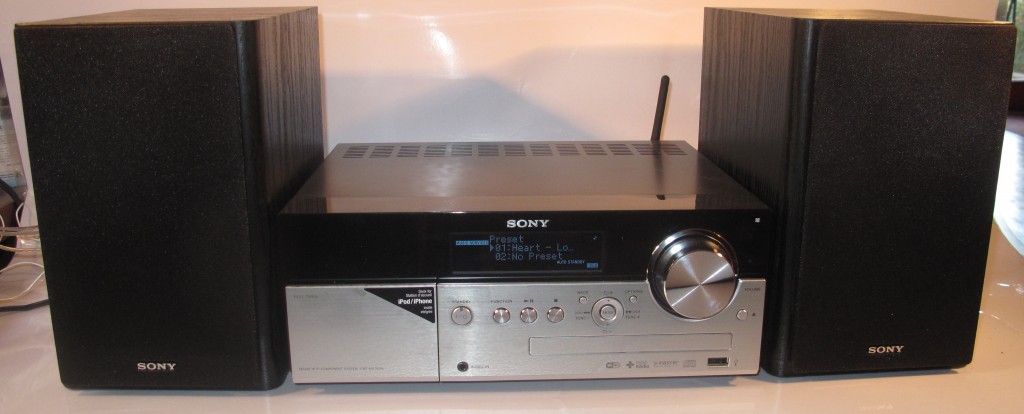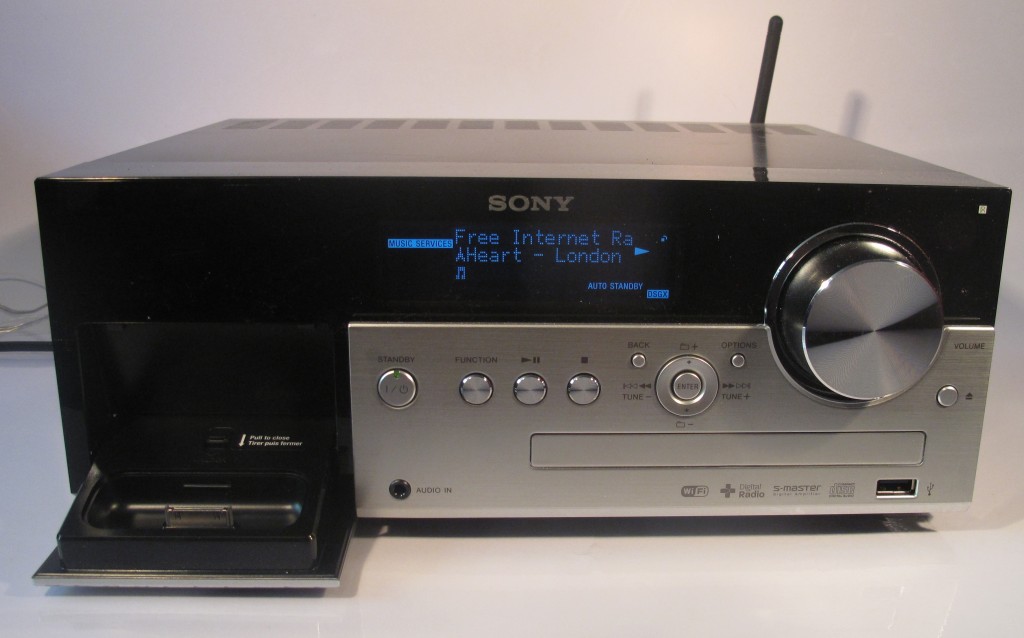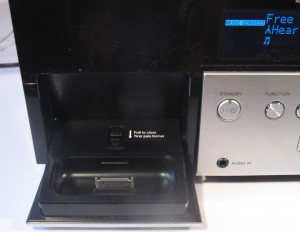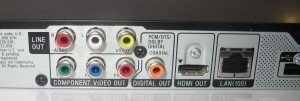 Welcome back to the second part of my report on the Internationaler Funkaustelluing 2011. In the first part, I had touched on home appliances briefly but had focused on computing technologies like smartphones, tablets, laptops and the home network.
Welcome back to the second part of my report on the Internationaler Funkaustelluing 2011. In the first part, I had touched on home appliances briefly but had focused on computing technologies like smartphones, tablets, laptops and the home network.
Now I am focusing on consumer electronics which mainly is focused around digital cameras, TV and home-theatre / hi-fi technology.
Consumer Electronics
Cameras
3D is still being considered a dominant technology with some of the cameras being equipped with two lenses and sensors. As well, Samsung have also fielded a camera with two screens – one on the back and one on the front.
The camera manufacturers are releasing more of the small interchangeable-lens cameras. These are typically in the “non-SLR” style with the screw-on lens mounts. It is leading towards the appearance of more compact cameras with high-factor zoom lenses. Here, these cameras are being pitched mainly as mainly “bridge-cameras” which exist between the “point-and-shoot” camera and the SLR camera and have many adjustable photography factors including semi-automatic and manual exposure modes.
An issue that may affect the launch of digital photography equipment at this or subsequent IFA shows is the up-and-coming Photokina photo/film/video trade shows. These shows appear in Cologne at the end of September and they are often seen as a major launchpad for anything to do with photography or videography. A valid point may be raised about whether companies with digital photo / video equipment show their equipment at both shows, launching consumer equipment in Berlin and “enthusiast” equipment (DSLRs, high-end camcorders) in Cologne.
Of course, there hasn’t been much interest in using network technology for photo and video equipment when interlinking with computer equipment.
TV and Display Technologies
There are a few key trends that are occurring concerning the television receivers being promoted at the IFA.
One is the DVB-T2 digital-TV standard which is to launch in Germany. This revision of the DVB-T terestrial digital-TV standard will provide for more HDTV with H264 video. It will also allow for advanced interactive TV (HbbTV, VoD) platforms, robust terrestrial reception as well as more services per TV channel.
3D is still a dominant technology with Toshiba and other names promoting glasses-free 3D viewing where their sets use a polarizing screen and support an ersatz 3D effect for regular content. Haier are also using a similar technology for their 3D Internet-enabled set. LG are running 3D TVs that work with cinema-style passive polarizing glasses. ,
For content, Deutsche Telekom is providing “Entertain 3D” channels as part of their Entertain IPTV service. This requires the Deutsche Telekom “Entertain” set-top box and access to a VDSL2 next-gen service. There will be the magazine channels as well as highlight footage from Bundesliga football (soccer) matches as well as the “usual suspects” – those popular 3D action and animation films from Hollywood.
Another key trend is Internet-driven smart TV. This is with access to the Social Web, video-on-demand / catch-up TV amongst other interactive-TV services using the home network.
Hama are releasing at this year’s IFA an Android STB with access to full Android Honeycomb service on the TV screen. This time, the set-top is able to connect to the network via WiFi, or Ethernet.
Samsung are pushing the Social TV agenda. This allows you to view TV and chat on the Social Web at the same time with a button to press to focus on Facebook/Twitter/Google Talk chat streams or TV content. There is also the ability to use a Samsung smartphone or Galaxy Tab as the TV keyboard once you install the appropriate app. Of course, there is a Samsung TV remote that has a QWERTY keyboard and LCD display to facilitate the chat function.
Samsung have also released an app for their Android smartphones and tablets which allows the image on their Smart TVs to be shown on these devices.
Sharp have contributed to the smart-TV race with the AQUOS Net+ app subsystem for their TVs. As well Metz are showing a network-enabled 3D TV with HbbTV broadcast-broadband support and a 750Gb PVR.
There was an increased number of TVs that had the 21:9 aspect ratio being launched at this show. This aspect ration was more about a “cinema-screen” aspect ration that was often used with a lot of movies since the 1950s.
Even the projector scene is going strong at this year’s IFA.
Acer are showing the H9500BD 3D Full-HD home-theatre projector which is to be released October. This unit can work at 2000 ANSI Lumen with a 50000:1 contrast ratio. It fixes the keystone problem that often happens with projectors by using a lens-shift setup rather than digitally skewing the image; as well as a high zoom lens that permits a big image with a short throw and also has wall-colour-correction for projection to non-white-walls It is expected to sell in Europe for €2499 recommended retail price
Sony are also launching a 3D-capable projector with a 150,000:1 contrast ratio and use of lens-shift as the keystone correction method. The big question that I have about this projector is how bright this projector is in ANSI lumens.
Canon also launched the LV8235 which is an ultra-short-throw DLP projector. Here, this projector can throw a 2-metre (80”) usable image projected with it being positioned at 32cm (1 foot) from the wall or screen.
As well, Sony had used this show to premiere a set of 3D personal video goggles. Here, these glasses show 3D video images on separate OLED screens, mainly for use with personal video players or games systems.
Home Theatre and Hi-Fi
There has been some activity concerning networked home-theatre and hi-fi equipment.
Harman-Kardon are launching a 3.1 HTIB with has an integrated 3D Blu-Ray player and uses a soundbar as its main speaker.
Loewe have used this event to launch the Solist single piece audio system. This has a CD player and access to FM and Internet radio broadcasts as far as I know. It can connect to home networks via WiFi, Ethernet or HomePlug and uses a 7.5” touch screen or Loewe Assist remote control as its control surface.
Sony have launched the SNP-M200 network media player which is the follow on from the SNP-M100, It offers 3D video support and an improved Facebook and Twitter experience. Of course, like the SNP-M100, it has the full DLNA Home Media Network credentials including being a controlled device. They also launched another Blu-Ray player in the form of the BDP-S185 which supports 3D Blu-Ray playback and access to online content.
As well, Pioneer have launched some network-enabled hi-fi equipment including a component network-audio player for use with existing hi-fi setups. Philips are using this show also to launch a Streamiun MCi8080 music system with DAB+ and Internet radio, a CD player as well as network audio. Intenso have launched their Movie Champ HD media player which is one of those media players that play off USB (or the home network). But this one can properly play 3D video in to 3D-enabled TVs.
It is also worth noting that Jarre Technologies is a newcomer to the scene of “worked” audio reproduction technologies. This firm has been set up by Jean Michel Jarre, known for setting the tone of European ambient-music with Equinoxe and Oxygene, and is now following the same path as Dr. Dre’s “Beats Audio” name. Here, they are launching their highly-powerful iPad speaker tower which can work comfortably at 10,000 watts and uses “speaker tubes” but would need a large area to perform at its best. Here, this product is all about proving Jarre Technologies metal and I wonder when there will be premium and multimedia laptop computers that have their audio subsystems tuned by Jarre Technologies on the market and who will sell these laptops.
Germany is now heading towards DAB+ digital radio broadcasting which yields an improvement over the original DAB digital-radio technology that it worked with before. Here, this technology uses AAC audio coding, allows for an increased number of broadcast services per multiplex and, from my experience with the Australian setup as I used many DAB+ enabled Internet radios on review, provides for highly-robust digital radio reception. It may be easier for set manufacturers to launch DAB+ digital radios in to this market due to them having DAB+ radios already on Australian and other DAB+ markets; and UK readers may find that their newer digital radios may be already set up for DAB+ technology even though the UK is working on “original specification” DAB radio.
Conclusion
The Internationaler Funkaustellung 2011 has reinforced the role of the networked home especially as Europe takes to the newer Internet technologies like 4G wireless broadband, IPTV and next-generation broadband service.








